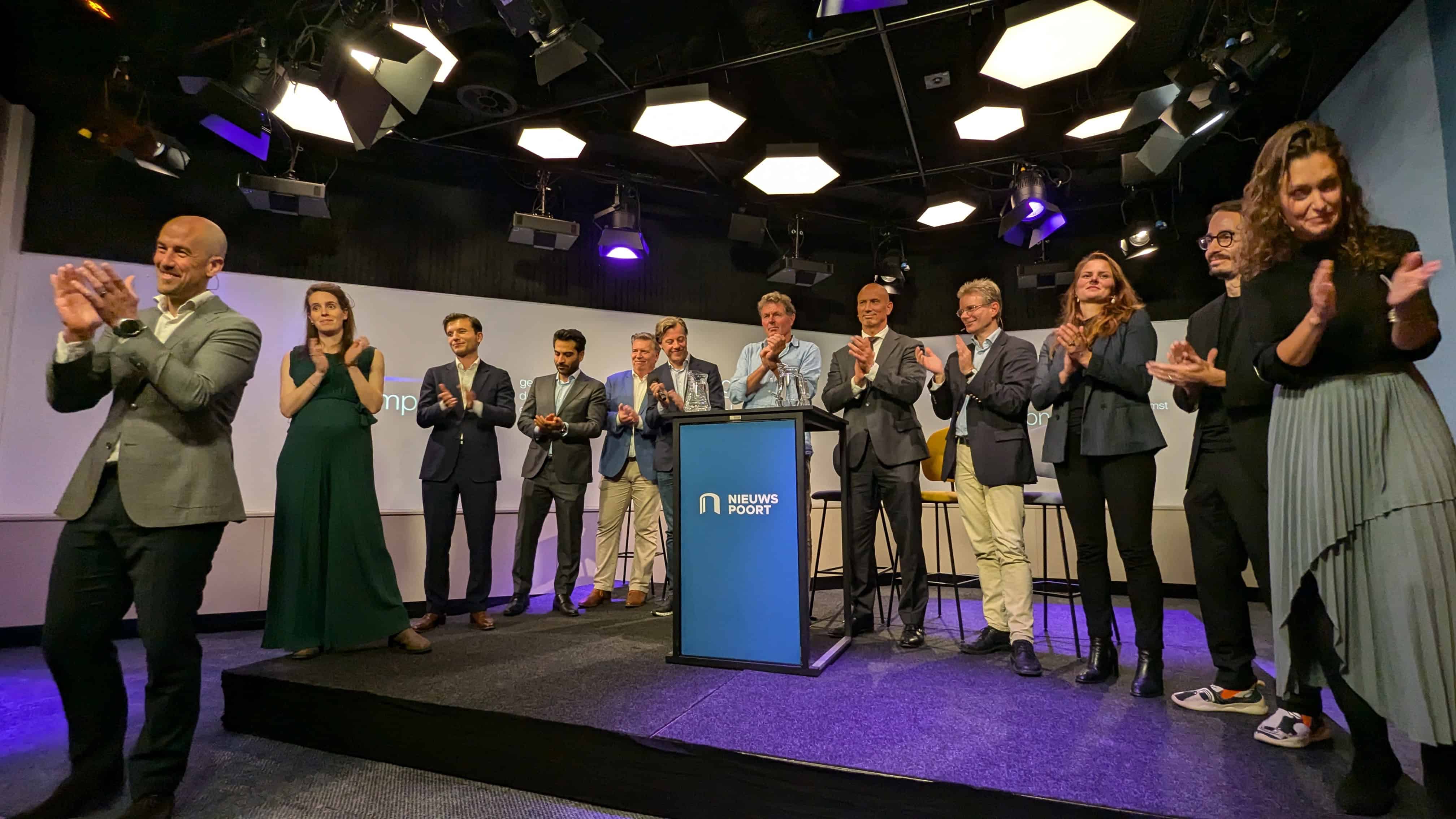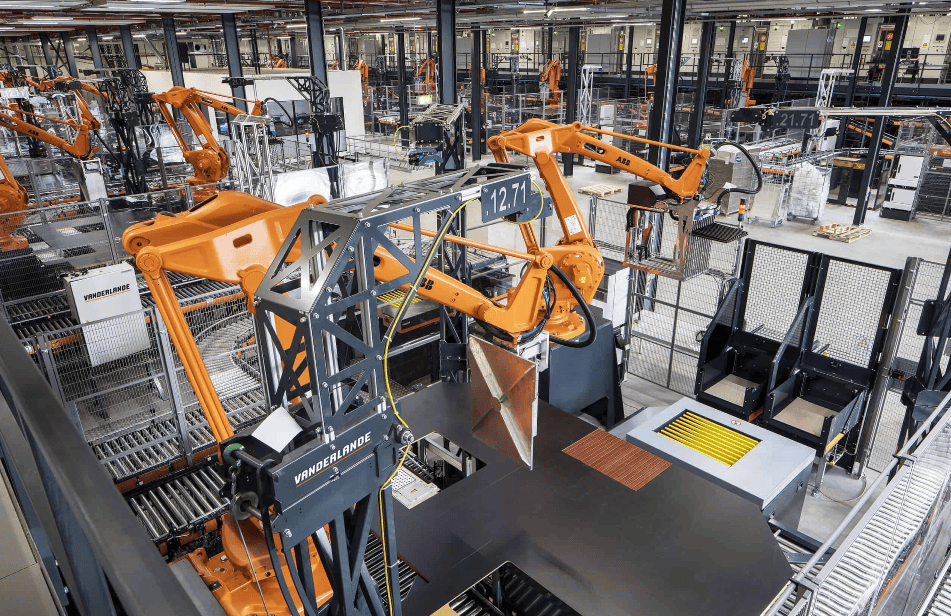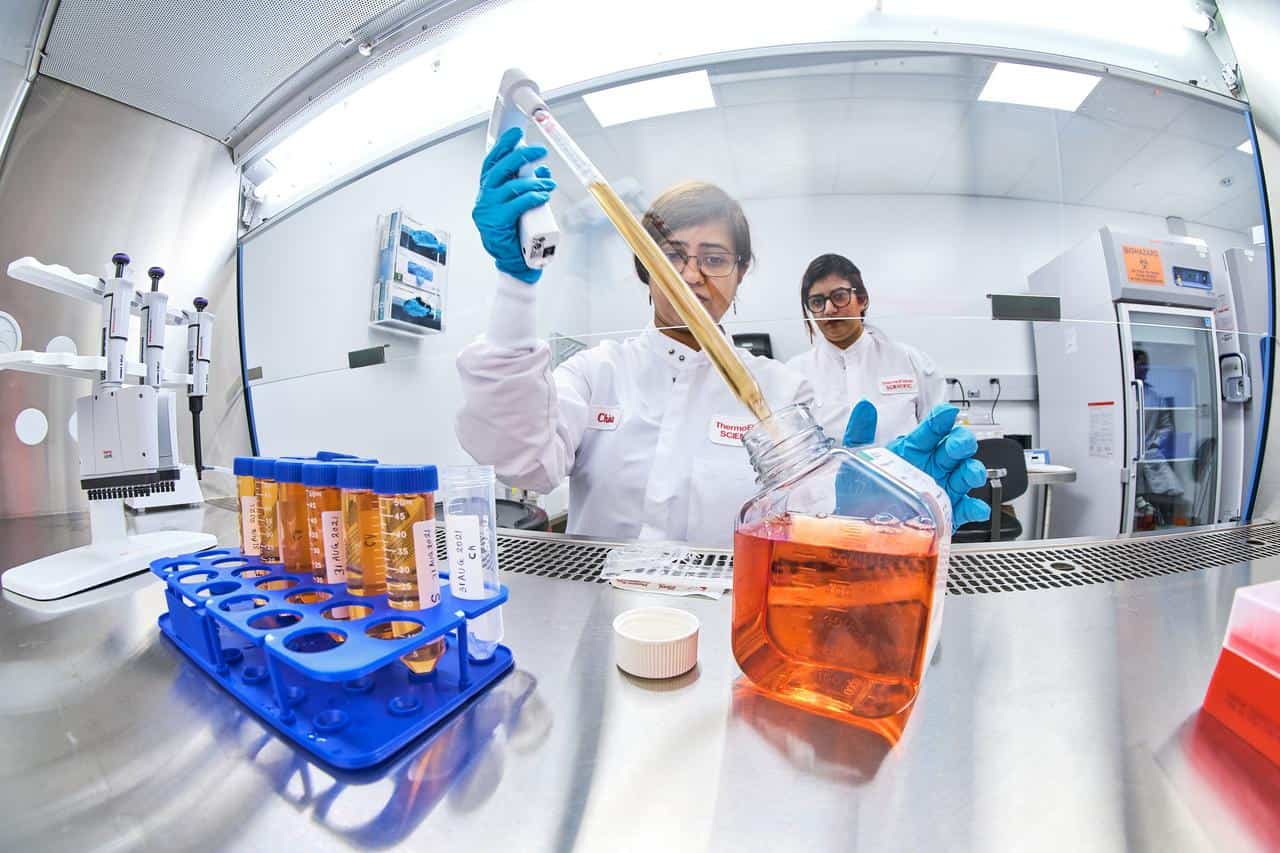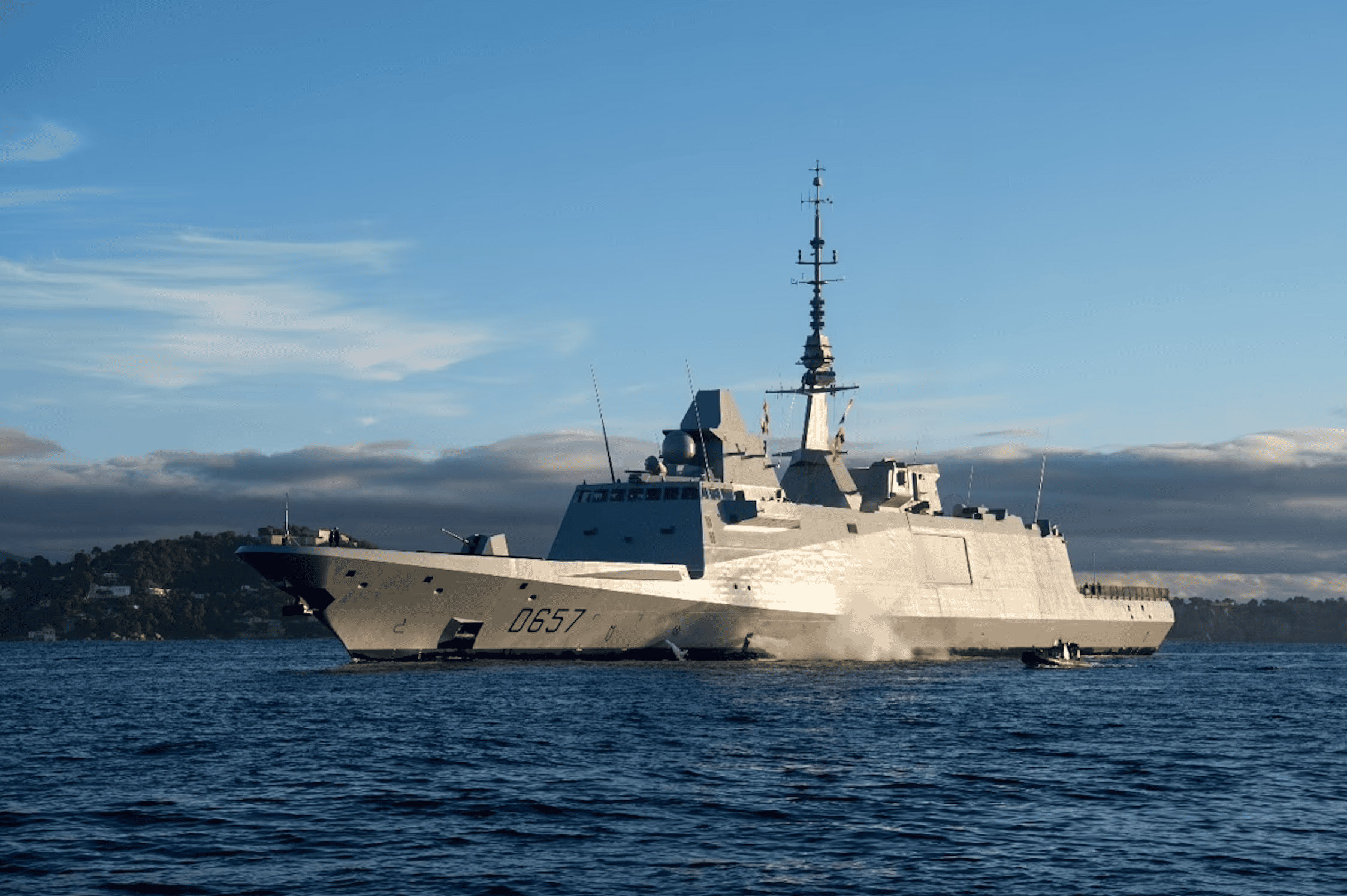
As the chair of the Top Team High Tech Systems and Materials (HTSM) and foreman of Holland High Tech, Marc Hendrikse is at home in the world of high tech. In the past ten years, he has drawn attention to this industry, not only in the Netherlands but worldwide. As a former boss at companies like DAF Trucks, BOVA, and NTS-Group, among others, it is not surprising that he was asked for this position. We talked to him about the global position of the Netherlands as a high-tech country, the social and economic impact of HTSM, and the opportunities and threats for the years ahead. The thread running through our conversation is the Knowledge and Innovation Agenda for Key Enabling Technologies, in which the Top Sectors demonstrate their ambition in the area of technology development.
When we mention HTSM, we are talking about a wide range of key technologies. Think of electronics, photonics, quantum technology, nanotech, medical technology, high-tech materials and the all-embracing systems engineering. As the chair of Top Team HTSM, how do you keep all those signs in the air?
“What I’ve always made sure of in every position I’ve ever held: gather good people around you. It’s an illusion that you can do it all by yourself, so make sure you get talents around you, people who know what they are talking about. And then you have to start making connections. That has always been a bit of my role: making connections. Together you can provide a vision for the future and then attract the specialists for that who will make sure we actually get there. So connecting is important. Plus a vision of where we need to go.”
Please take us with you; what does a work schedule of the chair of Top Team HTSM look like?
“In my role, I represent three pillars: government, knowledge institutions, and businesses. You want to connect those parties and in doing so have a role to explain how the other party thinks. At the beginning of the top sector policy, these worlds were still far apart. Each pillar has its own dynamics, its own mores. They have little knowledge of how things work in the other side’s world. I am trying to break through that so that there is more mutual understanding. By now, this has largely been achieved and you suddenly see that things can get into motion, simply because people find each other. Conducting those discussions, organizing meetings for that purpose, also focusing on government investments in research and innovation via the TKI scheme, continuing to talk about it, and ensuring that the entire support base is on board, that’s kind of what the chair of Top Team HTSM has to do.”
How powerful are you as the boss of this Top Team?
“For that, it’s good to take a look at that TKI scheme I was talking about. Ultimately it’s about companies being willing to invest in knowledge institutions like universities or the TNO research institute. We can’t decide upon that of course; those companies have to do that themselves. But what we can do is act as a driving force. In the sense of “if you do this now, then we’ll also add some extra money” and in this way, we support things that are new, such as quantum technology, which has really taken off since then, the Holst Centre, the ARCNL institute and so on. In short, you can exert a great deal of influence, but ultimately it has to be the companies, the knowledge institutes, and the government itself that decide to take the real steps.
What I have noticed in recent years is that, because we are one of the few parties that do not have a lobbying agenda, we are seen as very credible. Our agenda is the whole of the Netherlands, or even beyond, and that means that what we say has extra credibility in our national government and elsewhere; it is not an individual agenda, but one that is endorsed by the full breadth of the industry.”
Since 2011 you have been involved in the top sector policy of HTSM, since 2017 as the chair of the Top Team. What are the main achievements?

“First of all: we found each other. And that, given the hugely fragmented constituency, is really special. It goes from aerospace to automotive to lab-on-a-chip, organ-on-a-chip, nanotechnology, semiconductor, quantum technology… it’s about technologies, it’s about applications, it’s incredibly broad. There was no umbrella hanging over it, people hardly knew each other. We started profiling ourselves under the name Holland High Tech. Simply by showing how big this sector really is. We did this both abroad and at home. The best example of this is still the first Hannover Messe that we organized in 2012, the biggest success of which was that the Netherlands found out for itself how big we really were. Two years later we repeated this as a partner country and suddenly various ministers came by. Everyone suddenly saw how good we really are in high-tech. That had not been the case before, certainly in political networks. The breadth of the sector was also hardly known: that half a million people work in it, that we are responsible for a quarter of Dutch exports. It was always big and broad, but because it was so fragmented, it was less visible. So the first real effect for me of the top sector policy was to make it visible that we were there, how big we were and how important we were.
But there was also a big external effect. Right now we’re talking about €500 million of PPP money per year, around public-private partnerships. That’s very hefty. But perhaps even more important than the money itself: companies and knowledge institutions and governments suddenly had an incentive to find each other. That was much less the case in the past.”
What does that do to the Netherlands as an HTSM country, as a knowledge country?
“Holland High Tech has chosen countries like Germany, France, the United States, Japan, and China as target countries. We did, when we started doing this, a little survey about our reputation there as a technology country. The answer was disconcerting: we were completely unknown, even in Germany. They knew Frau Antje, but not our industry. This has improved significantly in recent years, but there is still much work to be done. Together with Foreign Affairs, we have drawn up an agenda. We have now realized that it is precisely in Europe that we must maintain our independent technological base. This also requires cooperation within Europe. For example, look at the innovation cooperation that has now been established with France and Germany, resulting in cooperation on hydrogen development, lightweight materials, and emission-free transport. These are important processes and we have noticed that these countries, in particular, are now well aware of what we in the Netherlands have to offer in these areas. For photonics we are doing something similar with the American west coast, for automotive we are focusing not only on the aforementioned countries but also on Michigan and for nano on Japan. It is precisely this logic of content that is important, otherwise, it will be too big to grasp.
The Netherlands does have a positive reputation as a country, which helps us with every introduction, but we still have to make it clear time and again what we have to offer within HTSM. Then you notice that those countries also become interested. What often helps is the combination of universities that already know each other or other existing contacts between companies. And we always get help from the government – through the targeted efforts of ministers, for example – to get things going. We are starting to play that game better and better.”
The hydrogen transition is one of the examples you mention. Germany recently announced it was pumping tens of billions into it. So what role can you still play in the Netherlands?

“It’s about showing where you are complementary. For example, the Netherlands is very strong in thin-film technology and optomechatronics, and we could develop new technologies in the field of electrolysis that complement the expertise that the Germans have to offer in this area. By doing it together and by perhaps not putting billions but also serious money into this, you can make great strides, together. Electrolysis is of great importance in any case because the cost price of hydrogen will soon have to be reduced considerably. We are already very good at this, certainly, because you have to combine different technologies. We are truly world champions in this field in the Netherlands.
The process may be familiar, but you have to come up with something new. To realize that, that’s in our culture. We are the least hierarchical country in the world, and that works both vertically and horizontally. The implementer is in close contact with the inventor, but that also works between sectors, partly because it is accepted that each of the specialists involved is stubborn enough to think that it can solve the other’s problem. That leads to systems engineering, in which we are unbeatable. It is precisely this systems engineering that you need because in many of the areas that are important now the existing systems no longer work. But if you need another subsystem, you have to have the courage to look at the whole system. You’re not going to solve it by just looking at the separate elements from it. And whether it’s emission-free transport, the hydrogen transition, or a lab-on-a-chip, you have to combine technologies that didn’t know each other before. For example, by connecting the chemical industry with the high-tech industry. By bringing Shell and ASML together you can take steps that were previously unthinkable.”
If it’s so important, wouldn’t it then be good if the Netherlands also had a separate education in systems engineering?
“Yes indeed, we are also focusing on that in our programs. We are indebted to Philips in this regard: they had this well organized within the company. But now we have to make sure that we pass on that knowledge, expertise, and skills to a new generation and that requires investment, also at the university level.”
Linked to that, a recurring question: how do we ensure to find enough new smart talents?
“High tech Campus is the ultimate example that you can bring people here from all over the world, the same goes for a company like ASML: from everywhere people want to come here to work for ASML. Just as everyone wants to play football in Barcelona, everyone wants to go to that company that is the top player in systems engineering. The culture of work in the Netherlands is also very pleasant for those newcomers, even if they come here with a family we have a lot to offer. I’m not very worried about the sustainability of that system. What I do worry about is the influx of students in VMBO and MBO technology, because ultimately everything that is thought up here has to be built as well. Thinking about it here and having it made somewhere else is not good enough. You have to want to make it here. Unfortunately, there you see that it is really drying up; we have been trying to break that trend for years but we succeed only very moderately.
That’s also a cultural problem, we have to be honest about that. In terms of girls in engineering, we are about number 80 in the world, which is bizarrely low. Other countries show that it can be done very differently. Also among young people of immigrant background, we are still doing badly when it comes to enrolment in engineering education. There is still too much of an image that you don’t want to work in industry, while the reality is now completely different.”
That’s a serious problem. How can this be changed?
“We have already tried a great deal. There will be a separate hackathon in the fall, with the central question: what should we do to fix this? We are trying to break through this with experts from all sides because, in all honesty, what we have done up until now has had too little effect. I am already happy that technology has become a little better known and that the good stories about this sector are heard a lot more. Ten years ago, very few people had heard of ASML, but that has changed. Now people are even proud of it. But unfortunately, that doesn’t translate into the applications for vmbo- and mbo-technology.”
The list at the beginning of this conversation already shows how broad HTSM and the Knowledge and Innovation Agenda for Key Enabling Technologies are. Isn’t there a need to focus a bit more on a number of specific themes?
“Ultimately, yes. What we are trying to establish therein is find out where the real scientific excellence is located and which companies need it. Technology push and market pull, you want to bring them together. We do that, for example, in the NextGen HighTech program. It is precisely with this in mind that we are now focusing on photonics, quantum technology – although this is still at an early stage – and optomechatronics. We visit Dutch companies on these themes to ask them about their view of the market. If it then becomes clear that the market is willing to invest, then you know that something bigger can emerge. And vice versa: if we don’t find that market, if there is no Dutch company that is willing to start investing in a certain new technology, then you also know that it will be a hopeless operation.”
The search for marketable applications will largely lie with start-ups. Fortunately, there are plenty of them in the Netherlands, but what about the chances for them of growing into a scale-up?
“The start-up culture in the Netherlands has improved a lot. Techleap helps with that. But where we score less well is in scaling up these start-ups. That’s often in the funding. The opportunities in the Netherlands for industries that require a long horizon, with high investments, and high returns once they succeed, are still limited. There is a lack of knowledge about this, and perhaps also a little bit of courage. Partly thanks to the Top Sector HTSM, the government has created a deep-tech fund here, a fund for scale-ups. We have been arguing for this for a long time and it is now going to be set up via InvestNL, ultimately with around €350 million. But that’s not all, there is probably something else coming: a private fund in which pension funds also participate, who can then match their investments with the deep-tech fund. These are large sums of money and then you can really get something done. With tickets worth 30 to 50 million euros you can really make a difference in photonics or quantum technology. The government has a role to play in supporting companies precisely at this stage.
Besides those funds, venture capitalists are also starting to play more of a role here. But they must be prepared to accept that it could take ten or fifteen years before the invested money is earned back. We can also support them in this: by advising new VCs. I can invite a dozen of people, people with a lot of experience at ASML or Philips for example, who can look at an investment proposal together and come to a sensible conclusion. A VC can then rely on that in the choices he makes for the next investment. In this way, we can create a culture in which these elements reinforce each other. Exactly as you see around Cambridge and Silicon Valley, you could then also create a self-reinforcing ecosystem here in the Netherlands.”









